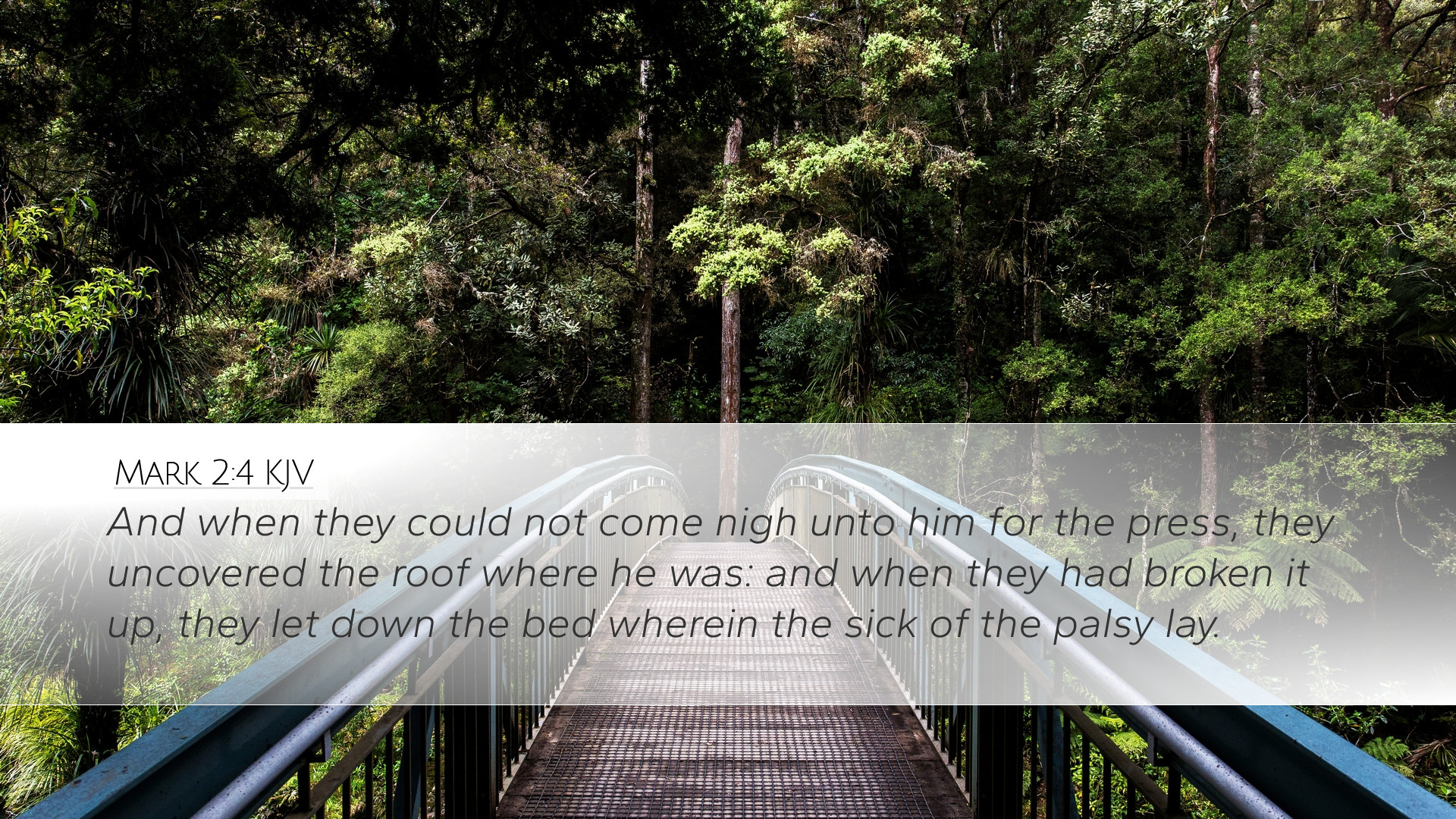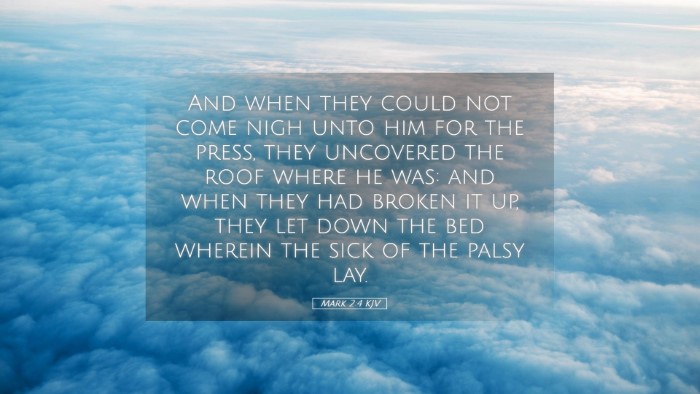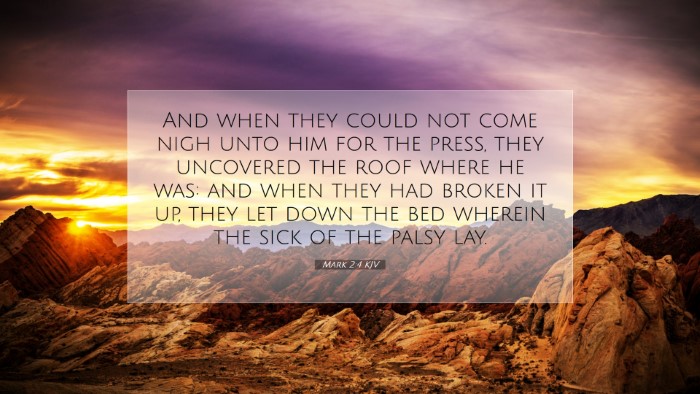Old Testament
Genesis Exodus Leviticus Numbers Deuteronomy Joshua Judges Ruth 1 Samuel 2 Samuel 1 Kings 2 Kings 1 Chronicles 2 Chronicles Ezra Nehemiah Esther Job Psalms Proverbs Ecclesiastes Song of Solomon Isaiah Jeremiah Lamentations Ezekiel Daniel Hosea Joel Amos Obadiah Jonah Micah Nahum Habakkuk Zephaniah Haggai Zechariah MalachiMark 2:4
Mark 2:4 KJV
And when they could not come nigh unto him for the press, they uncovered the roof where he was: and when they had broken it up, they let down the bed wherein the sick of the palsy lay.
Mark 2:4 Bible Commentary
Commentary on Mark 2:4
Mark 2:4 states, "And when they could not come nigh unto him for the press, they uncovered the roof where he was: and when they had broken it up, they let down the bed wherein the sick of the palsy lay."
Introduction
This passage provides a significant insight into the faith and determination of those seeking healing for a paralyzed man. The actions depicted highlight the lengths to which individuals would go to reach Christ and the importance of faith and community in the process of healing.
Contextual Background
Mark's Gospel is known for its immediacy and action. The ministry of Jesus is portrayed in a dynamic manner, emphasizing His authority and compassion. In Chapter 2, the narrative focuses on the healing of the paralytic, a crucial event that illustrates the intersection of faith, physical need, and societal barriers.
Exegesis and Insights
The Difficulty of Access
The phrase “they could not come nigh unto him for the press” indicates the overwhelming crowd surrounding Jesus. This highlights both the popularity of Jesus and the challenges faced by those in need of His healing. According to Matthew Henry, this crowd is symbolic of the challenges believers often face; at times, the way to the Savior seems obstructed by various burdens and distractions.
The Determination of the Friends
Mark emphasizes the teamwork of the friends who carried the paralyzed man. As noted by Albert Barnes, this act not only reflects their faith but also a deep sense of community responsibility. In a contemporary context, it serves as a reminder that individuals should aid one another in spiritual and physical burdens, embodying Galatians 6:2, which instructs believers to bear one another’s burdens.
Breaking Through the Barriers
When they “uncovered the roof”, they exhibited radical faith and creativity in overcoming obstacles. Adam Clarke suggests this act of breaking through signifies the determination that genuine faith exhibits. It challenges believers today to consider what lengths they might go to in the pursuit of Christ and the healing He offers.
Spiritual Interpretation
The physical action of lowering the sick man through the roof can be seen as a metaphor for approaching God with total surrender. This act signifies removing barriers that prevent us from accessing divine help. As Matthew Henry implies, “the roof represents the hardness of our hearts and the ceilings of our doubts”—and the need for something to break through to touch the divine presence.
The Role of Faith
The faith of the friends is pivotal in this narrative: their belief in Jesus’ ability to heal led them to this radical action. Albert Barnes underlines that such faith does not always require perfect belief, but a deep yearning and commitment to seek Christ can facilitate miraculous encounters.
Theological Implications
This passage presents essential themes in Christology and soteriology, particularly the nature of faith and healing. The act of uncovering the roof can be viewed theologically as an indication that faith often requires action. The challenge to contemporary believers is to not only possess faith in Christ but to act upon it.
Community and Faith
The collaborative effort displayed by the friends emphasizes the importance of community in spiritual journeys. Adam Clarke posits that each believer has a role in bringing others closer to Christ, which challenges the individualistic tendencies in modern faith expressions.
Conclusion
Mark 2:4 is not merely a historical account; it encourages reflection on both personal and communal faith practices. The narrative invites believers to examine their efforts in seeking Christ, the determination involved in faith, and the importance of community in spiritual healing. It challenges the faithful to overcome any barriers in pursuit of Christ and to bring others along on this redemptive journey.
Reflection Questions
- What barriers have you encountered in your spiritual journey, and how can you address them?
- How does your community support you in your faith and in bringing others to Christ?
- What actions can you take to express your faith in tangible ways?


